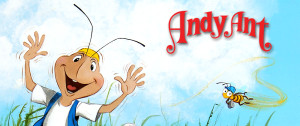
Story Writing Hints
By
Gerald D. O’Nan
Author of the
Adventures of Andy Ant Books
(Note: I will try to give you hints and ideas about writing stories using the 8 books in The Adventures of Andy Ant as examples. Having a set of the Andy Ant books available will help you understand the context better, but it isn’t necessary if you have a good imagination.)
Tailor the Idea to Your Audience
After you have an idea for the story, decide who you are writing the story for. Are you writing for kids, if so, what age group? Is your story focused on boys/girls/or both? Are you writing for Adults? Is there a specific demographic group that you are writing for? These are very important questions to decide before you start writing. The answers to these questions dictate the length of the story, the complexity, and the difficulty of the words that you use.
When I started writing the Adventures of Andy Ant stories I was focusing on the early to mid-level reader with a grade level of second to third grade. There were very few children’s books that dealt with moral and ethical concepts. My objective was to instill Judeo-Christian values in the reader through an adventure.
One failure of the stories was the lack of stronger stated Judeo-Christian principles. In that regard, I had not considered the targeted demographic group as carefully as I should have. Each of the books referenced God in the story but lacked a stronger tie-in to the concept – a message that much of the purchasing audience (parents and grandparents) was seeking.
At the same time, many secular bookstores refused to stock the books because “God” was mentioned in the story and the inside cover contained a NOTE TO THE PARENTS. These notes also refer to the Bible. These elements were the “kiss of death” for marketing in secular bookstores. In fact, the manager of the largest bookstore in Denver told me that they would not carry the books because the books mentioned God and had the NOTE TO PARENTS. The manager said, at best they only belonged in the religious section of the bookstore, rather than the children’s section. She went on to say that the religious principles were not strong enough to warrant being in the religious section.
I mention this to bring attention to the fact that writing for your targeted audience can become a very important marketing issue. So, give your proposed audience considerable thought even if it means writing with a more focused approach. The more focused approach even means deciding whether your target audience is girls or boys. Even though there is some crossover between the girls or boys audience, your primary characters often dictate who your principal audience will be.
In The Adventures of Andy Ant, the principal audience is second – third-grade boys. Having said that, it is important to note that both Andy and Joey have sisters and Andy’s sister occasionally plays a role in the stories. Even though the Adventures of Andy Ant books primarily have male characters, some of the most avid fans of the series are girls. Yet, a stronger female presence in the stories would have broadened the audience.
While all of the Andy Ant stories have their roots in my personal experiences as a kid, personal experiences aren’t the only place to gather ideas. Look at the experiences of others. Watch other people, be a good observer, and let those experiences grow in your imagination. Whether you are an adult or a very young author, work on your imagination. It’s easy to play “let’s pretend.” I was very good at playing Let’s Pretend and using my imagination – even to the point of imagining that I could get a good grade on my science project without doing much/any work… That was the beginning of the Goofed Up Science Project story.
I learned another creative technique for using your imagination to write a story in the 7th grade. My English teacher instructed us to look through a picture magazine, find a picture of a person, and write a story about that person (not reading or knowing anything about the person). I chose Life Magazine as my source The picture I selected was a disheveled man wearing a suit who looked very angry. In my story, this man was the maître d’ at a restaurant and had just learned that they were out of Jolly Roger Onion Rings. The assignment was a great exercise in imagining what was going through the man’s mind. Try this exercise sometime and see what you come up with.
I also recommend that you read a lot of stories for the age group you are writing for, watch other people, learn from their experiences, and keep a journal of what you saw and learned.
Copyright © 2023 by Gerald D. O’Nan All Rights Reserved. No part of this document may be used or reproduced by any means, graphic, electronic, or mechanical, including photocopying, recording, taping, or by any information storage retrieval system without the expressed written permission of the author except in the case of brief quotations embodied in critical articles and reviews.



